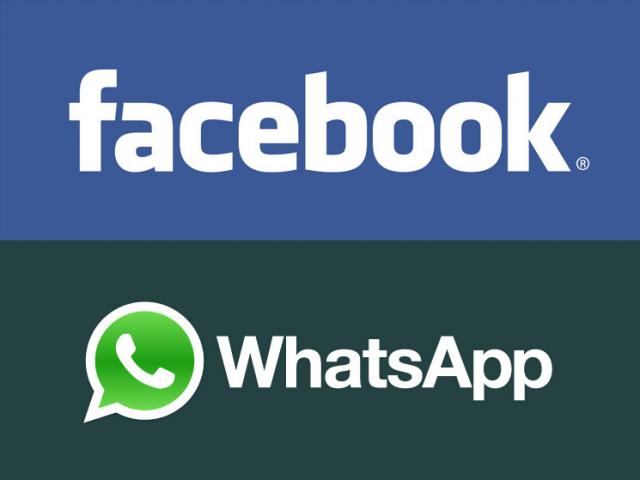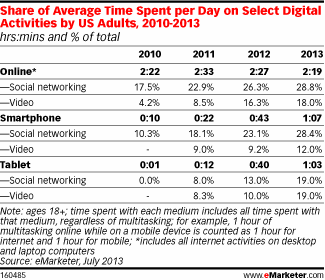
Get your FREE 30-day trial.
Please complete all fields.
 Facebook has entered into an agreement to purchase WhatsApp, a messaging app that has seen explosive growth with over 450 million monthly active users. Facebook is shelling out $16 billion in cash and stock, an additional $3 billion in restricted stock units to employees and founders, and a $1 billion cash break-up fee if the deal falls through.
Facebook has entered into an agreement to purchase WhatsApp, a messaging app that has seen explosive growth with over 450 million monthly active users. Facebook is shelling out $16 billion in cash and stock, an additional $3 billion in restricted stock units to employees and founders, and a $1 billion cash break-up fee if the deal falls through.
WhatsApp started as an alternative to SMS that allowed users to message each other for free across smartphones. In just four years, WhatsApp has more monthly active users than Facebook, Gmail, Skype, and Twitter combined when they were four years old.
The founders of WhatsApp right now. (cc: @MikeIsaac) pic.twitter.com/8CzbbZpAoK
- Nick Bilton (@nickbilton) February 19, 2014
Just last week, Rakuten, the Amazon.com of Japan, also announced it was buying the messaging app Viber for $900 million. The feeding frenzy for mobile social apps and mobile messaging apps has begun. This trend in mobile social, though, has been a long time coming.
Whether you've joined the debate about whether or not WhatsApp was grossly overvalued, the question you are really asking is what does all of this mean for marketers?
1. WhatsApp proved you can make it as a social network (service) without in-app advertising
From their beginnings, WhatsApp was focused around building a pure messaging experience without advertisements and other ploys to gain revenue. Their revenue model is simple: After one year of free use, the WhatsApp service will cost $0.99 per year for users - with no strings attached. WhatsApp focused around providing a service and being a customer company. I and many others have no doubt that is part of the reason why they have risen so quickly and were bought for $16 billion. Facebook has also made it clear that WhatsApp will remain ad-free.
2. Customer service and relationship management through WhatsApp
If brands can't use WhatsApp to advertise to its users, then what purpose will WhatsApp have for marketers and brands? The future for WhatsApp may include, though, something similar to brand accounts where users can communicate seamlessly with brands. This could have significant opportunities for customer service and relationship management for brands - especially in global markets.
 3. Mobile is the social platform
3. Mobile is the social platform
According to eMarketer, 28% of time spent on smartphones in 2013 was on social networks. 65% of all time spent on social networks was in a mobile device (comScore). To top it all off, mobile app use in messaging and social apps saw a 203% increase in 2013. Mobile app use as a whole only saw a 115% growth (Flurry Analytics). This mobile social thing is not just a fad or simply a way for Facebook to increase shareholder value. It is the future. Mobile devices are quickly becoming the computing platform for all of our digital social interactions from calling, SMS and messaging, pictures and videos, email, social media, and more.
Benedict Evans, analyst at Andreessen Horowitz, says, "Smartphones are inherently social, unlike the desktop web."
4. Mobile is overtaking the desktop internet
Soon, the "mobile internet" will no longer be a silo and the "mobile internet" will the THE internet. Mobile is the next platform and is quickly overtaking the desktop. It is already several times larger than the desktop internet. Globally, mobile devices are quickly becoming the first screen. In 2012, there were about 1.6 billion PCs in use the world. 1.7 billion mobile phones were sold in 2012 alone. Smartphones are expected to grow to over 3 billion devices by 2017 while PCs remain mostly stagnant (Benedict Evans).
5. Mobile is no longer an add-on
As my last point illustrated perfectly, there is a significant shift in place right now where mobile is becoming less and less of an add-on accessory for consumers and becoming the central device for their lives where they access the internet, interact with their friends and family, shop, watch television and movies, and interact with brands. This shift should be true for marketers as well. Mobile is no longer and add-on to your communication strategy. It needs to be a part of every design, marketing, and strategy discussion.
6. Bridge social and mobile environments
Marketers need to develop ways to truly bridge their social and mobile environments. As we say often at ExactTarget, it is now more important than ever to develop a single view of your customers and tie together your data points between all your marketing channels. Easy ways to start this process is to tie social channels into your mobile app and making content easy to share on mobile devices. Do not overlook the social and sharing experience on mobile devices.
These acquisitions might have caught many by surprise (especially in valuation), but this trend in mobile messaging has been growing for some time. Mobile is no longer a silo and something to "consider." Companies that don't begin to leverage mobile opportunities will be passed up by those that do.